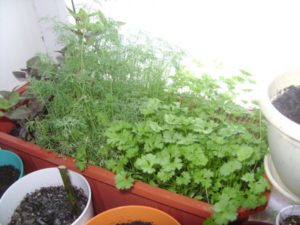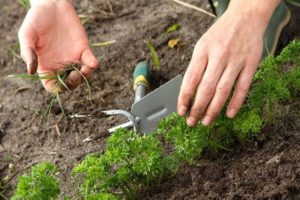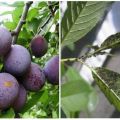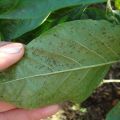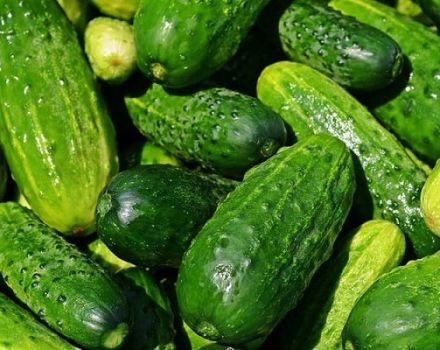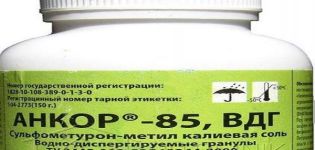How to deal with aphids on parsley on the windowsill and garden beds, and how to handle it
The formation of aphids on parsley is considered one of the most dangerous pests of garden culture. Often, recent plantings that delight their owners with fresh greens begin to wither. The danger lies in the fact that the affected area is rapidly increasing and can affect neighboring plantations, spreading to other plants. Aphids can be the reason for this, so it is important to know about the basic methods of dealing with a pest infestation.
Aphid habitat
Aphids can live on the leaves, stems and roots of the plant. Infected shoots quickly weaken, as the pest sucks out all the juice from them. In one season, the aphid is capable of giving up to 50 new generations, which is fraught with serious consequences for the backyard in the absence of timely measures.
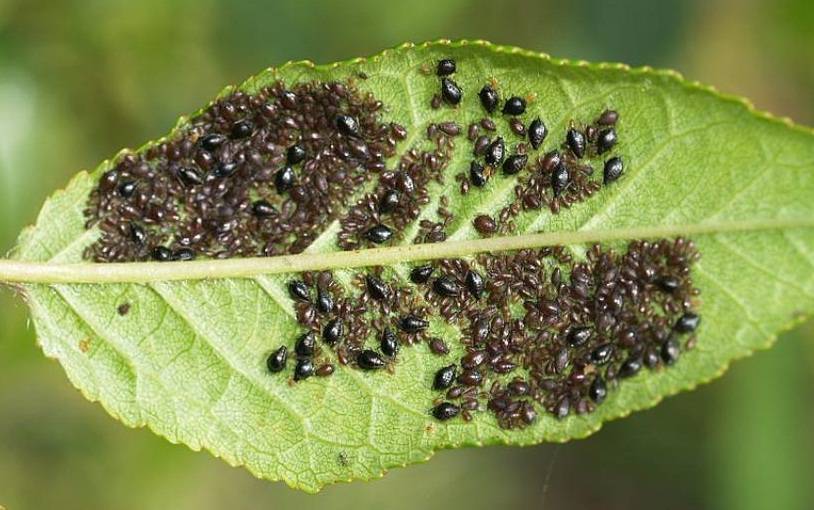
The main spread of the pest is ants, which constantly deliver new "tenants" to young shoots. Aphids prefer to eat parsley juice, preferring to feast on fresh shoots. The initial lesions are insignificant and at this moment it is possible to cope with them quite simply. Over time, with the ineffectiveness of the fight, the affected zones increase, it is almost impossible to save the harvest of greens at this moment.
The danger is that other plants are also infected.
Control methods
There are quite a few methods of dealing with aphids on parsley, and all of them involve the use of natural natural remedies or natural enemies of aphids.
There are the following methods of aphid control:
- ash and soap spraying;
- treatment with solutions based on plant plants;
- fumigation with tobacco smoke;
- spraying with products that include products from the "kitchen";
- attracting natural enemies of aphids in the form of birds and insects;
- planting next to parsley plants "scarecrow".
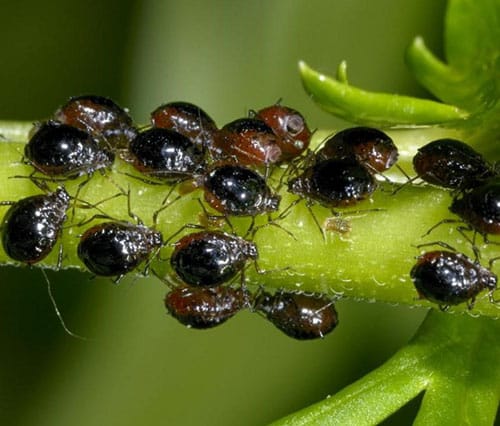
The use of chemicals for processing parsley plantings is unacceptable, since the greens absorb them and their consumption becomes impossible.
How to fight
Many novice gardeners, when they find aphids on a plant, are lost, not knowing how to deal with such a scourge. Spraying or washing parsley leaves is considered the main way to fight aphids. For this, a special solution is prepared with which the planting territory is treated. The frequency of the work largely depends on the agent chosen and the extent of the infection.
At the first signs of aphids on the bushes, it is recommended to immediately treat the shoots with an anti-pest agent or remove the affected plants. An important factor for the success of preventive measures is the elimination of ants, for which special pencils and sticky tapes are used, used in places of mass accumulation of insects. An effective way of treating an anthill with boiling water.
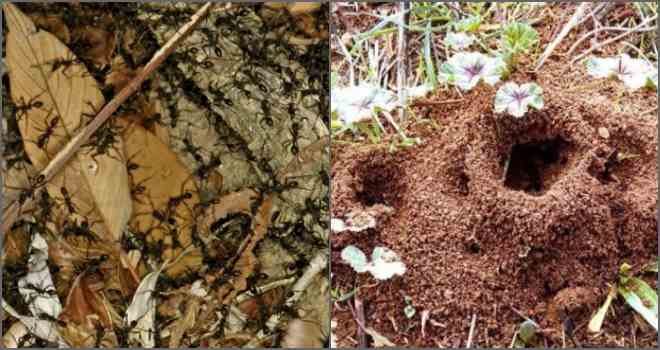
In winter, to obtain an additional source of vitamins, many gardeners practice growing parsley on a home windowsill... The appearance of aphids in this case poses a significant threat to indoor plants. When the first signs are found, the plant should be removed from the flowers and treated with one of the methods of dealing with aphids.
Prevention as the main method of control
As a preventive measure, feeders and places for birds are installed on the personal plot. The presence of sparrows, tits, wrens on the site will significantly reduce the risk of parsley infection by aphids. Similar measures are to attract insect enemies of such a pest in the form of a ladybug, lacewing, ground beetle.
For this, odorous herbs, daisies or other plants that attract beneficial insects are placed next to the parsley plantings.
Plants that scare off aphids with their aroma include:
- chamomile;
- lavender;
- onion;
- garlic;
- mint.
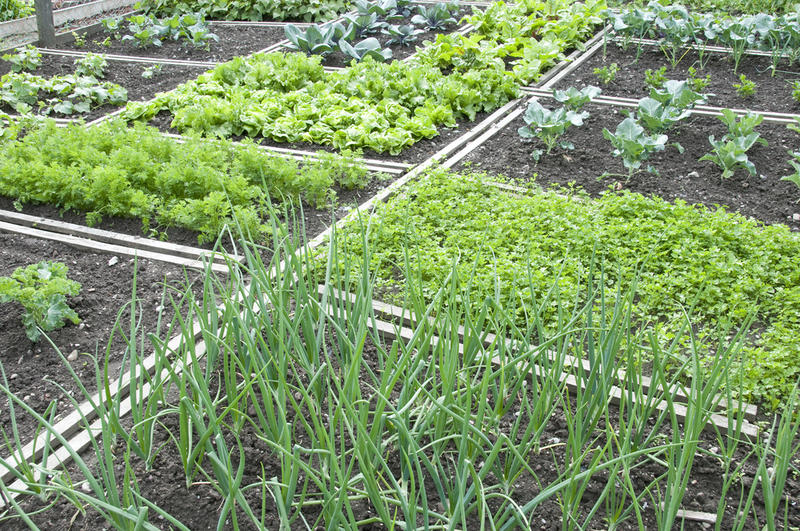
It is worth paying attention to those plants that are adjacent to parsley. Among them, there may be those that attract pests, provoking infection. It is not necessary to place nasturtium, petunias next to the garden culture; it is recommended to form plantings away from linden, bird cherry and viburnum.
How to handle aphids on parsley?
The easiest way to deal with aphids is to routinely rinse with a stream of warm water, but this is useful when single individuals are found.
Spraying methods based on ash and soap have good efficiency:
- for 10 liters of water, 300 grams of solid laundry soap or 125 grams of liquid soap are diluted;
- 300 grams of wood ash is boiled in 10 liters of water for 30 minutes, then used for spraying after cooling;
- for 10 liters of water, dilute 100 grams of tar.
The following herbal infusions are most popular for spraying:
- onion - 35 grams of onion heads for 5 hours insist in 1 liter of water, add 5 grams of laundry soap;
- garlic - 200 grams of garlic heads are crushed in 1 liter of water, then 25 ml of liquid is dissolved in 10 liters of water;
- tobacco - 200 grams of tobacco is kept in 5 liters of water for 2 days, the resulting volume is brought to 10 liters;
- citrus - 100 grams of any citrus peel is insisted in 1 liter of water for 3 days.
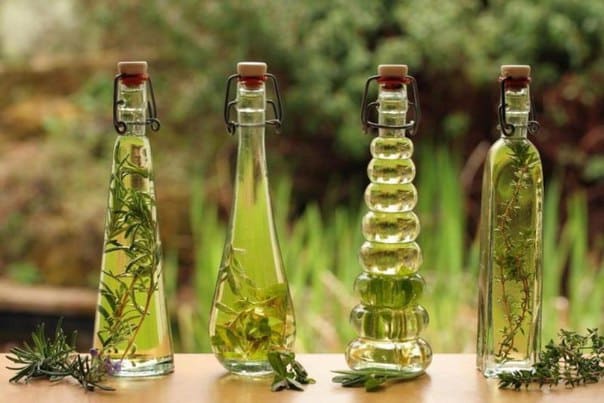
Although these recipes use natural ingredients, do not exceed the recommended dosages. In high concentration, plant components can cause burns in parsley. Before using the solution, it is recommended to check the reaction of the plant in a small area.
Getting rid of insects on cut greens
It is quite easy to get rid of aphids that have settled on green leaves after cutting the plant. To do this, take a deep container and pour salt water into it. To prepare the solution, use ordinary edible salt. The greens are placed in the liquid for 5 or 10 minutes. After that, the bundles are removed and washed under warm running water. This procedure can be repeated as many times as required until all insects are removed from the parsley.
